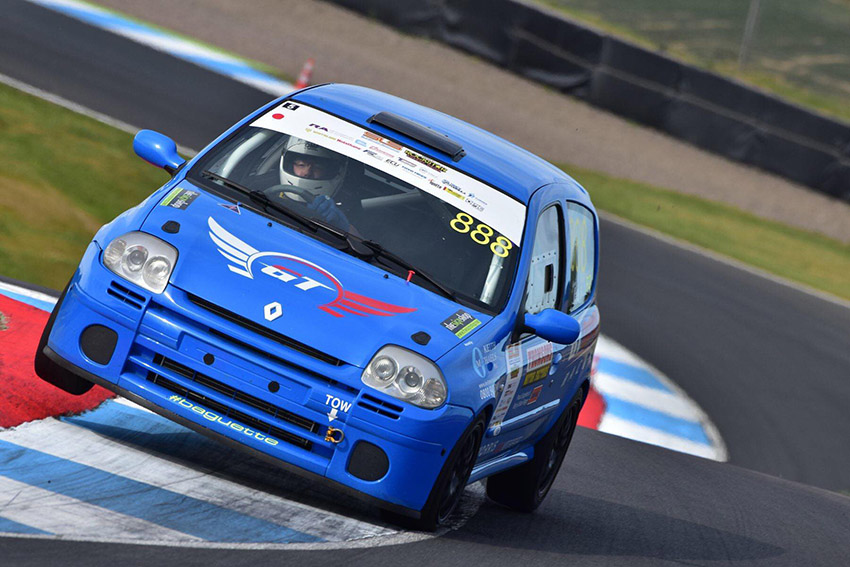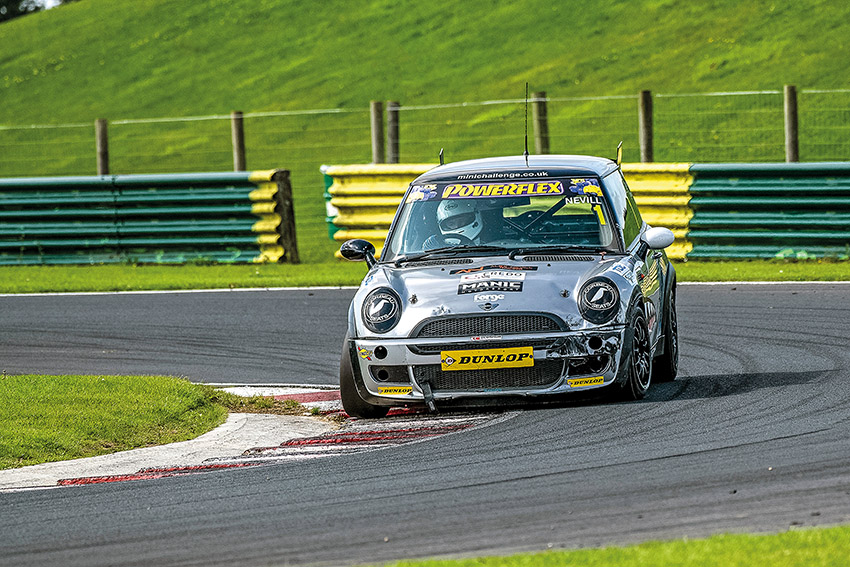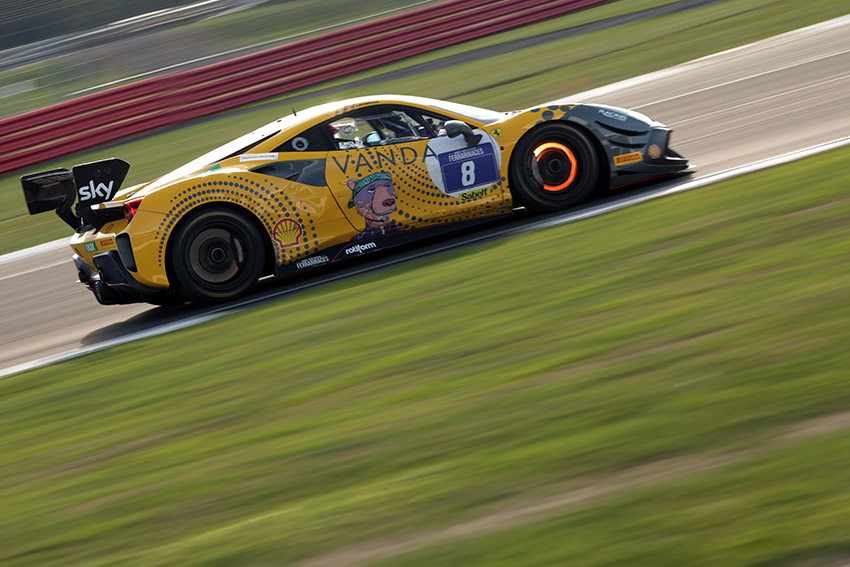Perfecting your braking on track is crucial for safety and performance. This guide takes you through the finer points on how you can improve your braking.
Words: Alex Nevill.
Braking is a very important part of driving on track; you won’t get very far without it! Aside from the obvious, the corner really starts with the braking zone. Poor braking will put you on the back foot for the rest of the corner, as you desperately try to stay on the track and can’t focus on your corner or exit speed. Good braking, on the other hand, will give you the confidence to come off the brakes and carry the speed through the corner. It’s not as simple as just applying the brakes as you do on the road every day, of course, you have to consider your brake pressures and your modulation a lot more.
How and when should you brake on track?
You want to start the braking zone with what’s known as threshold braking, literally braking on the threshold/limit of grip and braking performance your car has to offer at that moment. Try to reach the threshold as soon as you can in the braking zone so that you can scrub most of the speed off early, and from there, you can smoothly and slowly release the brake pressure on the approach to the corner. This enables you to brake late, but it also gives you the confidence to carry speed through the corner, as you’ve really been able to feel the car slow down. The gradual bleed off the brakes is key to getting the car turned in for two reasons: speed and weight transfer. The last bit of braking can be the difference between slowing the car down enough to make the apex of the corner or running wide, but a slow release of the brake will also mean that there’s still some weight over the front of the car, which will help it to turn.
What happens if you brake too hard on track?
If you exceed your braking threshold on any of the wheels then they’ll ‘lock up’. The wheels will stop turning as the braking has exceeded the grip level of the tyre, and the car may begin to skid. On a front-wheel drive car like a hot hatch, this will usually result in the car being unable to turn into the corner if a front wheel has locked, although if it’s a rear wheel, it’s not usually an issue on a front-wheel-drive car. A lock-up can cause a ‘flat spot’ on the locked tyre, where it will flatten the curve of the tyre on the part that is running along the ground at the time. This can cause vibrations, and every time you hit the brakes afterwards, it also seems to find the flat spot each time, which makes the flat spot worse. Eventually, it can lead to a puncture on the tyre.
The solution to a lock-up is to simply release brake pressure until you get rotation back to the locked wheel, at which point you will have found the braking threshold. Of course, if your car is fitted with ABS then it will have kicked in at this point, but this technique is still worth bearing in mind. Modern ABS systems are usually very good, but the harder it has to work, the more brake pressure it’s having to release for you, and the harder it will be to slow down for the corner. Treat the ABS as feedback, modulate your brake pressure accordingly and work with the ABS instead of just relying on it.

What happens if you don’t brake hard enough?
The majority of novice track drivers start by doing exactly this. They start by braking softly, as they would on the road and then start to brake harder the closer they get to the corner. This can make you more likely to over-slow the car as it’s harder to get an accurate feel for when you should be releasing the brake when you’re decelerating hard, but you’re also more likely to spin the car if you find yourself carrying a high amount of brake pressure into the corner. This is due to the weight transfer the braking puts on the car (more on that in the next issue), but essentiality it takes the weight off of the rear of the car which makes it unstable.
Is threshold braking on track harder on my brakes?
This is a question I get a lot! Threshold braking means that you won’t be on the brakes as long as you would be if you braked with less pressure for longer, which also means less time for the brakes to build up heat and, therefore, it’s more sympathetic to your brakes. But there’s no doubt that driving on track is harder on all elements of your car, including the brakes, but when it comes to slowing down, brakes are cheaper to use than bumpers! If you’re that worried about your brakes, then you have to ask yourself whether the car is suitably prepared for track use. Discs, pads, and brake fluid that’s been designed for track use are all very worthy investments. After all, brakes are life-savers, so it’s not an area you want to be cheap with.
There are things you can do to look after your brakes, of course, such as building your speed/brake pressure on warm-up laps to gradually build the temperature in the brakes and allowing the car to have a cool-down lap at the end of the session to let the brakes cool down. This will prevent the discs from warping. Limit your sessions to around 15-20 minutes at a time. The longer you drive, the more likely the brakes are to overheat and watch out for the brake fluid boiling in particular as the fluid is never quite the same afterwards. Never put the handbrake on after a track session. You’re effectively putting a clamp on hot rear brake discs, and they can weld together in some circumstances. Most garages/paddock areas are flat surfaces, but for peace of mind, you can always leave it in gear.

What about trail braking on track?
Trail braking is a great technique to help a car rotate. It involves carrying some brake pressure into the corner to keep some weight on the front of the car (see weight transfer in the next issue), which helps the car turn into the corner. The keyword here is ‘trail’, as you’re effectively carrying the bleed-off (trailing-off) stage of the braking zone into the corner. If you carry too much brake pressure into the corner, you’ll either transfer too much weight from the rear which can cause a spin, or you might lock up the unweighted inside front tyre, which can cause you to run wide. A good sense of the balance of your car is needed to pull this off.
Your need to trail brake will be defined by two factors: the size and weight of the car, and the amount of power you have (grip is a factor too, of course). In the Coopers, for example, I don’t use a lot of trail braking at all, as the car is short, light and changes direction quite quickly. It also only has 130hp, so if I do slide too much with a trail brake, it’ll cost me a lot more momentum, and I won’t be able to make up for it down the next straight. My preference is therefore to accept a little bit of understeer if I have to in favour of keeping the corner speed high. In comparison, the JCWs are that bit bigger and heavier, so through a lower speed corner, I may trail brake all the way to the apex to help me put the car at a more positive angle, which I can then use to put the 280hp down better.
Make sure you check out our guide to wet weather track driving and how to prepare your car for a track day.
Guide from Performance Mini magazine.




